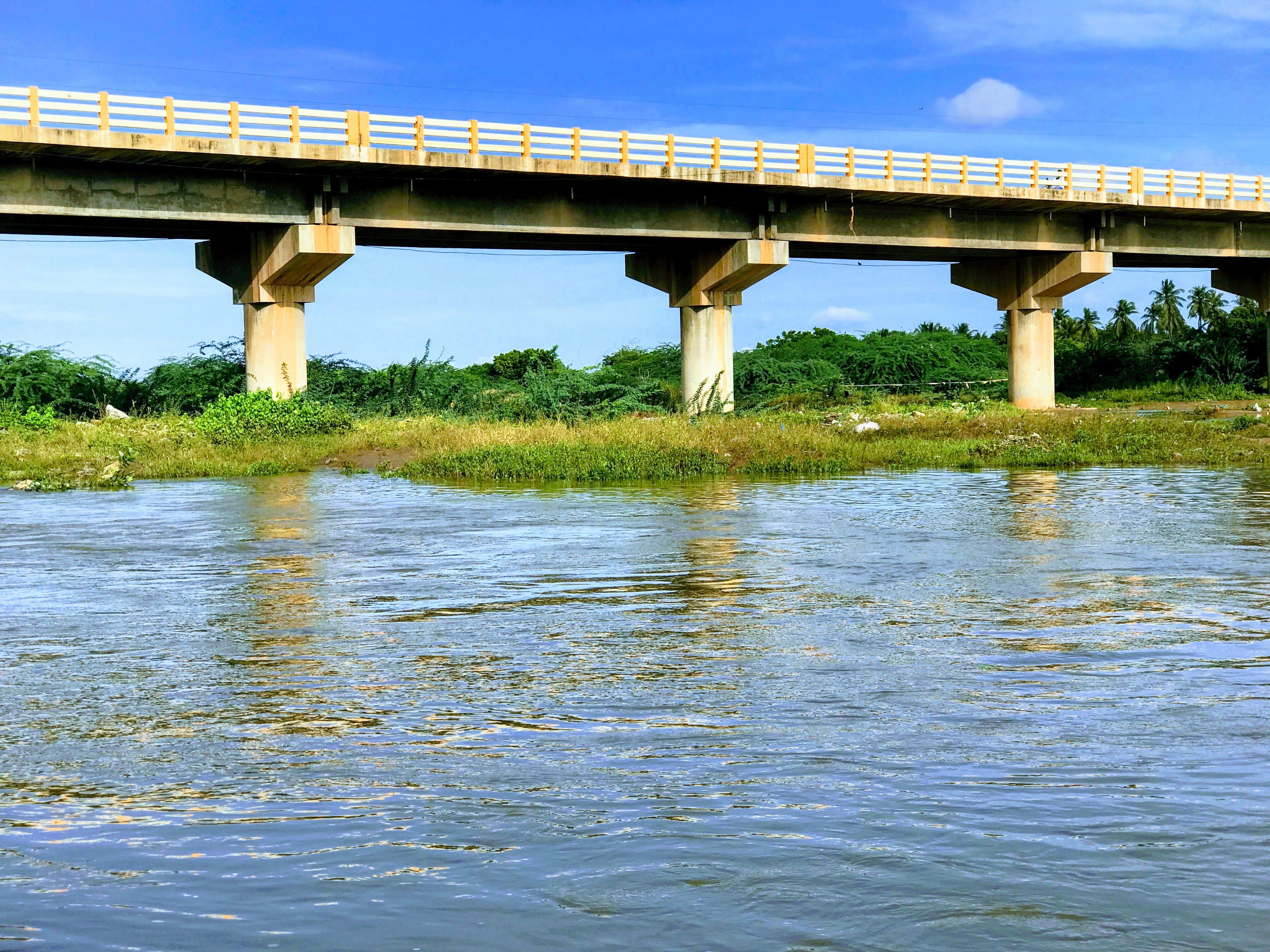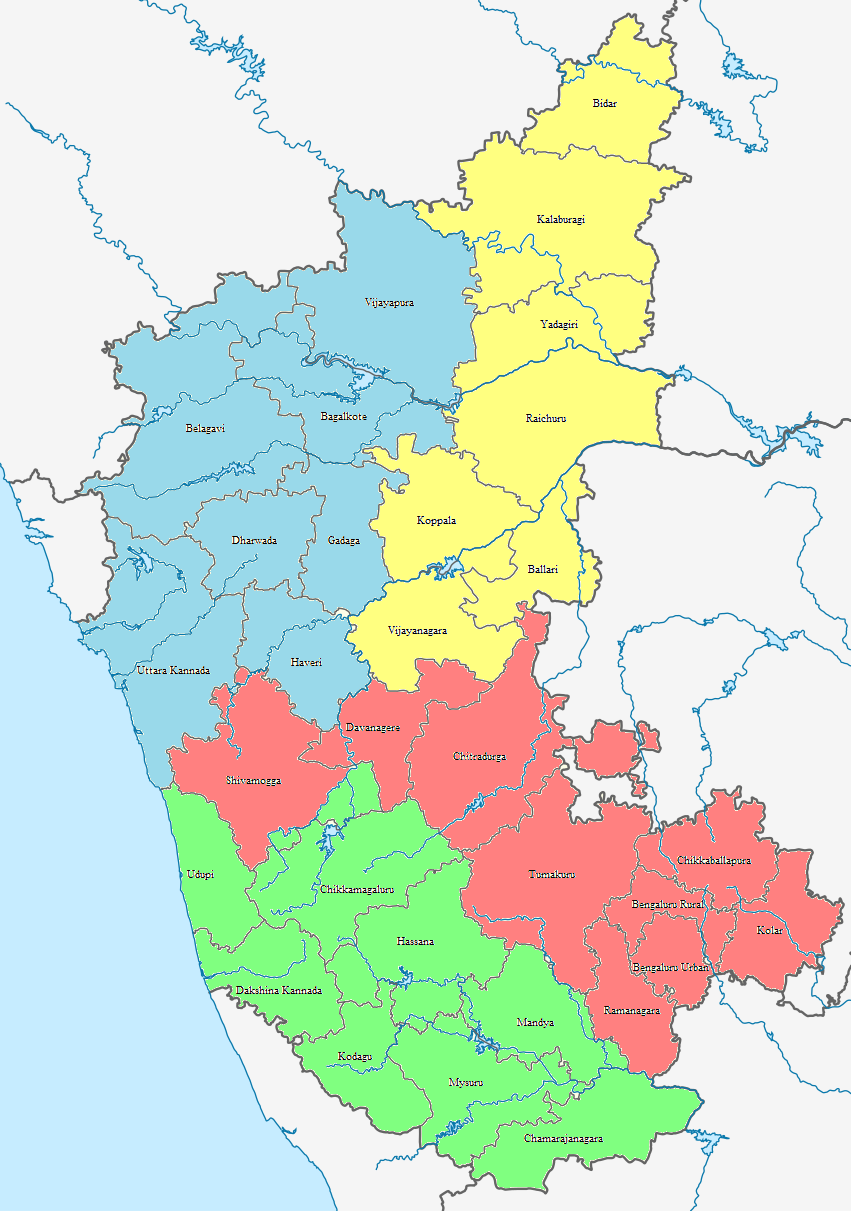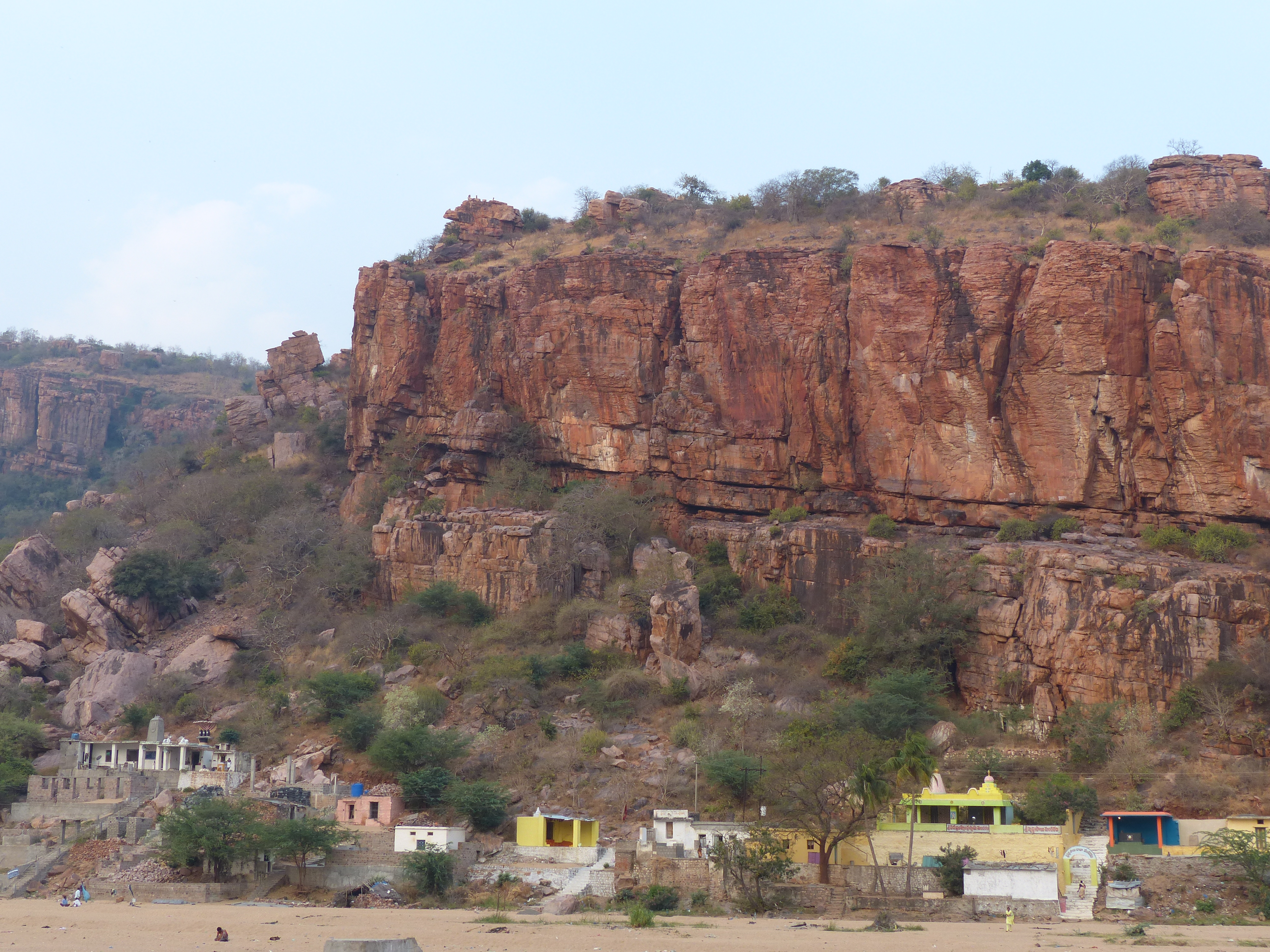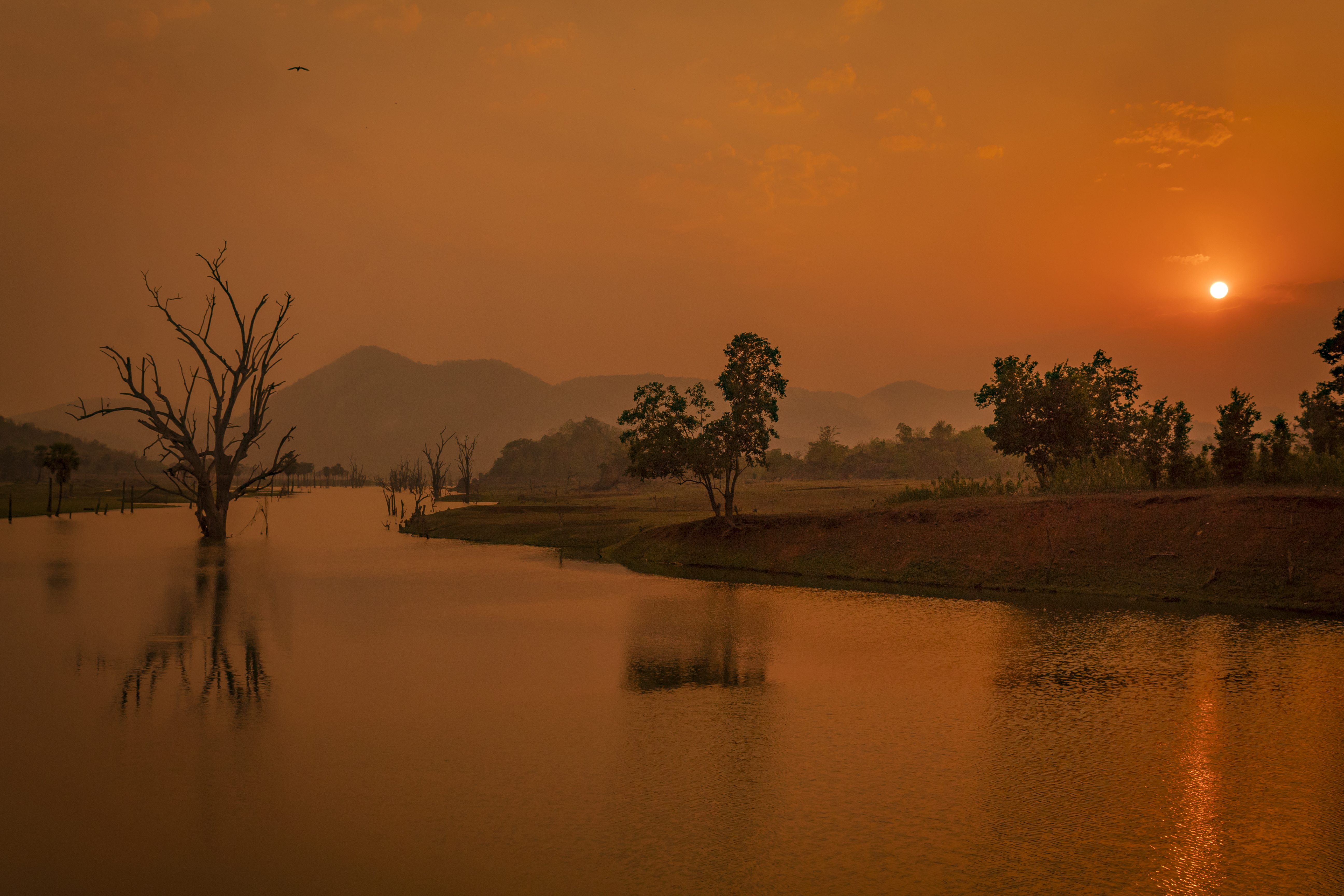|
Chitravathi River
The Chitravathi is an inter-state river in southern India that is a tributary of the Penna River. Rising in Karnataka, it flows into Andhra Pradesh and its basin covers an area of over 5,900 km2. The pilgrim town of Puttaparthi is located on its banks. Course Chitravathi river originates at Chikkaballapur and flows through the Chikkaballapur district of Karnataka before entering Andhra Pradesh where it drains the districts of Anantapur and Cuddapah before joining the Penna. The Chitravathi river basin covers an area of 5,908 km2. The mandals that it drains in the two states are Bagepalli, Gorantla, Hindupur, Puttaparthi, Bukkapatnam, Dharmavaram, Tadipatri and Mudigubba. The river joins the Penna at Gandikota in Kadapa district where the Gandikota irrigation project is being undertaken by the Government of Andhra Pradesh as part of its Jalayagnam project. Chitravathi is a seasonal river that comes alive after the monsoons. Along with the Papagni, it forms a part ... [...More Info...] [...Related Items...] OR: [Wikipedia] [Google] [Baidu] |
Tadipatri
Tadipatri or Tadpatri is a city in Anantapur district of the States and territories of India, Indian state of Andhra Pradesh at the border of Kurnool district and Kadapa district. It is the mandal headquarters of Tadipatri mandal in Anantapur revenue division. The Chintala Venkataramana Temple is located on a five acre site in Tadipatri. The Bugga Ramalingeswara temple, Bugga Ramalingeswara Temple is located one kilometer from the town, overlooking the Penna River. Etymology Tadipatri was first a village called Tallapalle. It was developed into a town and renamed as Tadipatri by Pemmasani Ramalinga Nayudu I of the Pemmasani Nayaks, who made this town his seat of government and later developed as a major city in Anantapur district.: Geography Tadipatri is located at . Its average elevation is 223 metres or 731 feet. Tadipatri lies on the southern bank of Penner River, Pennar River. Due to MPR Dam, Mid Pennar Dam constructed upstream, the section of river in Tadipatri is usual ... [...More Info...] [...Related Items...] OR: [Wikipedia] [Google] [Baidu] |
Sand Theft
Sand theft or unauthorised or illegal sand mining leads to a widely unknown global example of natural and non-renewable resource depletion problem comparable in extent to global water scarcity. Beach theft is illegal removal of large quantities of sand from a beach leading to full or partial disappearance of the beach. In India illegal sand mining is the country's largest organized criminal activity. Sand and beach theft by country Sand theft is a worldwide phenomenon. Beach theft, the large-scale removal of sand to the point that entire stretches of a beach disappear, is considerably less common. Two instances of beach thefts have been widely reported in the media: one in Hungary in 2007 and another in Jamaica in 2008. The beach that was stolen in Hungary was an artificially created one on the banks of a river. The other one is a genuine example of a beach theft. China Too much sand was taken from the Yangtze River to help build Shanghai in the 1980s and 1990s, prompting th ... [...More Info...] [...Related Items...] OR: [Wikipedia] [Google] [Baidu] |
Sand Mining
Sand mining is the extraction of sand, mainly through an open pit (or sand pit) but sometimes mined from beaches and inland dunes or dredged from ocean and river beds. Sand is often used in manufacturing, for example as an abrasive or in concrete. It is also used on icy and snowy roads usually mixed with salt, to lower the melting point temperature, on the road surface. Sand can replace eroded coastline. Some uses require higher purity than others; for example sand used in concrete must be free of seashell fragments. Sand mining presents opportunities to extract rutile, ilmenite, and zircon, which contain the industrially useful elements titanium and zirconium. Besides these minerals, beach sand may also contain garnet, leucoxene, sillimanite, and monazite. These minerals are often found in ordinary sand deposits. A process known as elutriation is used, whereby flowing water separates the grains based on their size, shape, and density. Sand mining is a direct cause of erosion ... [...More Info...] [...Related Items...] OR: [Wikipedia] [Google] [Baidu] |
Government Of Karnataka
The Government of Karnataka, abbreviated as, GoK, or simply Karnataka Government, is a democratically-elected state body with the governor as the ceremonial head to govern the Southwest Indian state of Karnataka. The governor who is appointed for five years appoints the chief minister and on the advice of the chief minister appoints his council of ministers. Even though the governor remains the ceremonial head of the state, the day-to-day running of the government is taken care of by the chief minister and his council of ministers in whom a great amount of legislative powers are vested. Administrative divisions Karnataka State has been divided into 4 revenue divisions, 49 sub-divisions, 31 districts, 237 taluks, 747 hoblies/ revenue circles and 6,022 gram panchayats for administrative purposes. The state has 281 towns and 7 municipal corporations. Bangalore is the largest urban agglomeration. It is among the fastest growing cities in the world. Political and administrative ... [...More Info...] [...Related Items...] OR: [Wikipedia] [Google] [Baidu] |
Barrage (dam)
A barrage is a type of low-head, diversion dam which consists of a number of large gates that can be opened or closed to control the amount of water passing through. This allows the structure to regulate and stabilize river water elevation upstream for use in irrigation and other systems. The gates are set between flanking piers which are responsible for supporting the water load of the pool created. The term '' barrage'' is borrowed from the French word "barrer" meaning "to bar". Dam construction Barrage dams have a series of gates that control the amount of water passing through it. A barrage dam can be used to divert water for irrigation needs or limit the amount of water down-stream. In most cases, a barrage dam is built near the mouth of the river. The site of dam construction needs to be thoroughly investigated to ensure that the foundation is strong enough to support the dam and has low possibility of failing. When dams are created, they are given a safety rating dep ... [...More Info...] [...Related Items...] OR: [Wikipedia] [Google] [Baidu] |
Tunga Ai Citravathi
Tunga may refer to: Places * Tunga, Leyte, a municipality in the Philippines * Tunga River, a river in India * The Gaelic name for the village of Tong, Lewis, in the Western Isles of Scotland * The Gaelic name for the village of Tongue, Highland, in the northwest of Scotland * Tunga Spur, a rock formation in Antarctica * Tunka Suka or ''Tunga Suca'', a mountain in Peru * Tálknafjörður, a town formerly called Tunga, in Iceland People * Alp Er Tunga, a mythical hero in Turkish literature * Michy Batshuayi Tunga, footballer * Tunga (artist) (1952–2016), Brazilian sculptor and performance artist Other uses * ''Tunga'' (flea), a genus of burrowing fleas * ''Tunga rakau'' or ''tunga haere'', Maori names for huhu beetle larvae * Battle of Tunga, or Battle of Lalsot The Battle of Lalsot was fought between the Rajputs of Jaipur and Jodhpur against Marathas under Mahadji Scindia to collect taxes from the Rajput States. Mahadji as the Naib Vakil-i-Mutlaq of the Mughal Emperor, ... [...More Info...] [...Related Items...] OR: [Wikipedia] [Google] [Baidu] |
Papagni River
Papagni River is a non-perennial, inter-state river in southern India that flows through the states of Karnataka and Andhra Pradesh. It is a right bank tributary of the Pennar river. Etymology ''Pāpāgni'' is a compound of the words ''pāpa'' (meaning sin) and ''agni'' (meaning fire). According to legend a king who once killed an innocent tribal chieftain of the Chenchus, who live in this region, was afflicted by leprosy as punishment for his sin. He was supposedly cured of the affliction only after he undertook penance in the Papagni valley and took a dip in the river upon which the river is said to have turned his sins to ashes thus acquiring for itself the name ''Pāpāgni''. Course The Papagni originates in the Nandi Hills of Chikkaballapur district in Karnataka. It is a non-perennial river that is rainfed with its basin receiving 60–80 cm of rainfall annually. It traverses through a region of granitic deposits and red soil that is frequently affected by soil ... [...More Info...] [...Related Items...] OR: [Wikipedia] [Google] [Baidu] |
Monsoon Of Indian Subcontinent
The Monsoon of South Asia is among several geographically distributed global monsoons. It affects the Indian subcontinent, where it is one of the oldest and most anticipated weather phenomena and an economically important pattern every year from June through September, but it is only partly understood and notoriously difficult to predict. Several theories have been proposed to explain the origin, process, strength, variability, distribution, and general vagaries of the monsoon, but understanding and predictability are still evolving. The unique geographical features of the Indian subcontinent, along with associated atmospheric, oceanic, and geophysical factors, influence the behavior of the monsoon. Because of its effect on agriculture, on flora and fauna, and on the climates of nations such as Bangladesh, Bhutan, India, Nepal, Pakistan, and Sri Lanka – among other economic, social, and environmental effects – the monsoon is one of the most anticipated, tracked, and studied ... [...More Info...] [...Related Items...] OR: [Wikipedia] [Google] [Baidu] |
The Hindu
''The Hindu'' is an Indian English-language daily newspaper owned by The Hindu Group, headquartered in Chennai, Tamil Nadu. It began as a weekly in 1878 and became a daily in 1889. It is one of the Indian newspapers of record and the second most circulated English-language newspaper in India, after '' The Times of India''. , ''The Hindu'' is published from 21 locations across 11 states of India. ''The Hindu'' has been a family-owned newspaper since 1905, when it was purchased by S. Kasturi Ranga Iyengar from the original founders. It is now jointly owned by Iyengar's descendants, referred to as the "Kasturi family", who serve as the directors of the holding company. The current chairperson of the group is Malini Parthasarathy, a great-granddaughter of Iyengar. Except for a period of about two years, when S. Varadarajan held the editorship of the newspaper, the editorial positions of the paper were always held by members of the family or held under their direction. Histo ... [...More Info...] [...Related Items...] OR: [Wikipedia] [Google] [Baidu] |
Jalayagnam
Jalayagnam or Jala Yagnam, (water worship), is a water management program in India. It has been implemented by Chief Minister of Andhra Pradesh, India, Dr. Y. S. Rajasekhara Reddy as an election promise to the farmers of the state to bring 8.2 million acres (8.2 million acres) under irrigation in five years. Y.S.R has taken required approvals from central government and NGTL. Also other required permissions for all the projects before he died. Like Site clearance, environmental clearance, R & R clearance, wildlife sanctuary clearance, forest clearance and technical advisory committee clearance. By the time he supposed to execute projects on phase manner, Y.S.R died in accident. Subsequently there was other issues like state bifurcation came to high intensity, subsequent Chief Ministers failed to give priority for Jalayagnam. [...More Info...] [...Related Items...] OR: [Wikipedia] [Google] [Baidu] |








